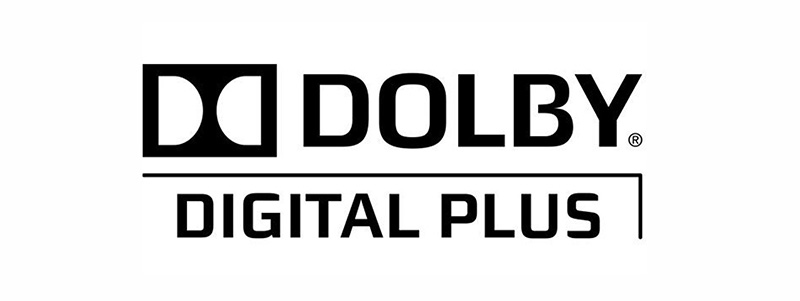
In the entertainment business and surround sound, Dolby and DTS are two well-known brands.
Suppose you are delivering the highest possible source material to the components. In that case, it makes little difference whether someone uses DTS or Dolby Atmos to get an exciting home cinema experience.
Despite the fact that Dolby has more efficient codecs than DTS, which means better and clearer sound, both offer a great home cinema experience. That said, DTS is not the only technology that Atmos has to compete against.
As such, here’s everything you need to know about Dolby Atmos and Dolby Digital Plus.
Dolby Digital Plus vs. Dolby Atmos
Dolby Digital Plus is a digital audio compression method. Dolby Atmos, on the other hand, is the name of a surround sound system.
Because of Dolby Atmos’ restricted bandwidth and processing power, it is not reproduced in the same way in home theatres as it is in cinemas.
Dolby Digital Plus vs. Dolby Atmos: Channels
On Dolby Digital Plus, a spatially coded sub-stream represents an effective depiction of the full, unique object-based mix features. The sub-stream is not a matrix-encoded channel, which is important to know.
Dolby Atmos can support 24.1.10 channels in home theatres. Furthermore, it has a spatially encoded digital signal, including panning metadata. It mixes the audio presentation using the spatially encoded sub-stream to fit the installed speaker’s configuration.
In the event of horizontally oriented speakers, Dolby Digital assigns 2.0 to 5.1 or more channels. Dolby Digital, Dolby Digital EX, and Dolby Digital Plus are the different types of Dolby Digital. The next level is Dolby TrueHD, but the speakers are arranged horizontally.
Speakers in the Dolby Atmos system are arranged horizontally as well as vertically. 3.1.2, 5.1.2, 5.1.4, 7.1.2, 7.1.4, and so forth. The first number indicates the number of horizontal speakers. The second indicates the number of subwoofers, and the third indicates the number of vertical speakers.
Vertical speakers, for example, may offer to dangle from the ceiling or point up from the top of horizontal speakers. Suppose you have a Dolby Atmos Blu-ray, and your receiver does not support Dolby Atmos decoding. In that case, Dolby Atmos supports encoding within a Dolby True HD signal.
Dolby Digital Plus vs. Dolby Atmos: Sound Creation
Since Dolby Digital Plus is a speaker-based system, when a sound illusion needs to be created behind the audience, the sound is tossed to one speaker.
Dolby Atmos is a 3D technology that sends sound to the entire 3D space rather than a single speaker. This setup creates a more realistic and powerful sound illusion, similar to that of a flying helicopter.
Dolby Digital Plus vs. Dolby Atmos: Support
Blue Ray discs employ the Dolby Digital Plus audio format. HDMI compatibility is also available. The majority of tablets and cellphones also support this digital audio compression method.
Dolby Atmos is available on a variety of media, including Blu-ray discs, movies, and home theatres. It offers object-based sound since it supports additional channels and can be powered with Dolby TrueHD or Dolby Digital Plus. Just remember that Dolby Digital Plus will use a lossy 5.1 track encoding and an upgraded version of AC3.
Dolby Digital Plus adds up to 20 more channels, with the kicker appearing as a DD+ soundtrack and hence Atmos as well. Atmos height channel sounds are created by applying Atmos metadata to a 5.1 channel stream and mixing it over the top.
Dolby Digital Plus vs. Dolby Atmos: Sound Quality
These audio technologies employs sound augmentation software to deliver a high-quality sound experience.
The distinction is that Dolby Digital Plus produces sound using your existing speaker setup, and Dolby Atmos uses both software and compatible hardware to create a richer sound experience.
As a result of the usage of specialized technology, Dolby Atmos performs somewhat better than Dolby Digital Plus in terms of sound quality.
Dolby Digital Plus vs. Dolby Atmos: Compression Rates
Another important factor in separating the two is compression rates. To compress 5.1 digital audio for Blu-ray discs, Dolby Digital uses a bit rate of 640 Kb/s. It compresses DVDs, however, at a slightly lower bit rate of 448 Kb/s.
Compared to Dolby Digital, DTS compresses audios at greater bit rates of up to 1.5 Mb/s for Blu-ray discs. It compresses DVDs at a rate of up to 768 Kb/s.
The compression gap widens as one progresses to rival HD formats. DTS-HD High Resolution can use up to 6 Mb/s, whereas Dolby Digital Plus can use up to 1.7 Mb/s. Theoretically, suppose the compression was lower during encoding. In that case, more detailed audio will be provided with a track that is practically identical to what was intended.
Conclusion
Dolby Atmos provides a surround sound experience in home theatres by utilizing surround sound signals such as Dolby True HD and Dolby Digital Plus.
When combined with Dolby Digital Plus, Dolby Atmos delivers the best audio experience. Because Dolby Digital Plus is the only version compatible with HDMI Arc, it’s also used by streaming services like Netflix and Amazon.
Suppose a product or gadget states it supports Dolby Atmos. In that case, it indicates it can give a full Dolby Atmos experience when utilized with another Atmos compatible device. It means that the movie should be converted in Dolby Atmos using Dolby Digital Plus or Dolby True HD and that the app, hardware, and soundbar/TV/AV receiver you’re using all support Dolby Atmos.
In comparison to Dolby Digital Plus, Dolby Atmos is a better version of presenting surround sound since it uses an object-based system that permits many channels and different arrangements.
